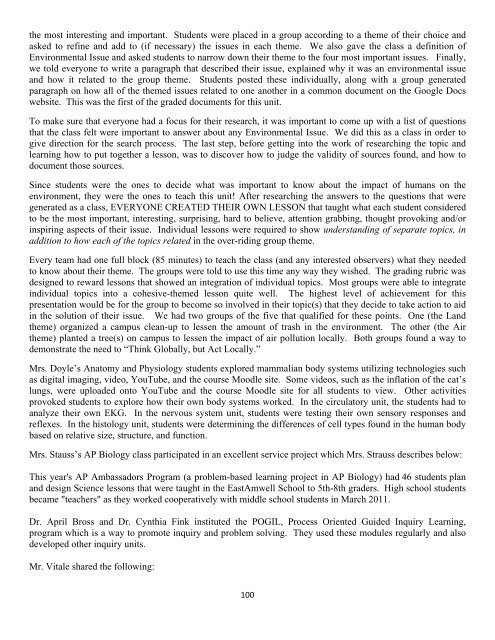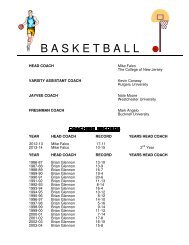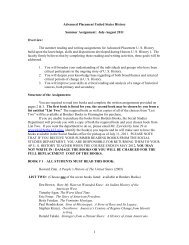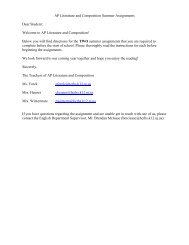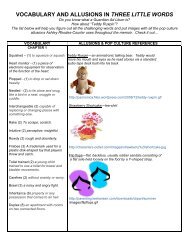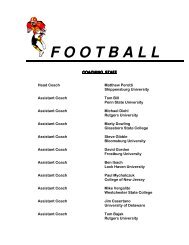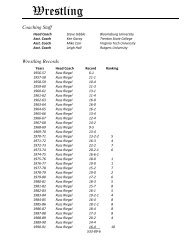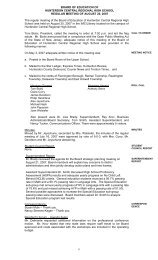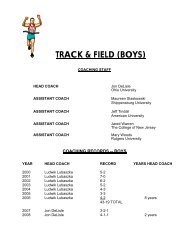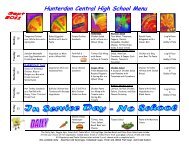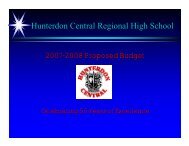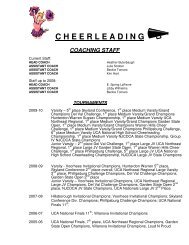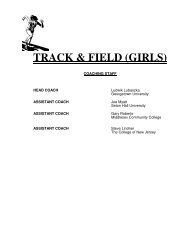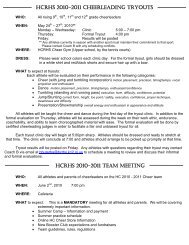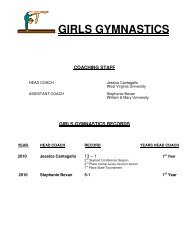HUNTERDON CENTRAL REGIONAL HIGH SCHOOL DISTRICT
HUNTERDON CENTRAL REGIONAL HIGH SCHOOL DISTRICT
HUNTERDON CENTRAL REGIONAL HIGH SCHOOL DISTRICT
You also want an ePaper? Increase the reach of your titles
YUMPU automatically turns print PDFs into web optimized ePapers that Google loves.
the most interesting and important. Students were placed in a group according to a theme of their choice and<br />
asked to refine and add to (if necessary) the issues in each theme. We also gave the class a definition of<br />
Environmental Issue and asked students to narrow down their theme to the four most important issues. Finally,<br />
we told everyone to write a paragraph that described their issue, explained why it was an environmental issue<br />
and how it related to the group theme. Students posted these individually, along with a group generated<br />
paragraph on how all of the themed issues related to one another in a common document on the Google Docs<br />
website. This was the first of the graded documents for this unit.<br />
To make sure that everyone had a focus for their research, it was important to come up with a list of questions<br />
that the class felt were important to answer about any Environmental Issue. We did this as a class in order to<br />
give direction for the search process. The last step, before getting into the work of researching the topic and<br />
learning how to put together a lesson, was to discover how to judge the validity of sources found, and how to<br />
document those sources.<br />
Since students were the ones to decide what was important to know about the impact of humans on the<br />
environment, they were the ones to teach this unit! After researching the answers to the questions that were<br />
generated as a class, EVERYONE CREATED THEIR OWN LESSON that taught what each student considered<br />
to be the most important, interesting, surprising, hard to believe, attention grabbing, thought provoking and/or<br />
inspiring aspects of their issue. Individual lessons were required to show understanding of separate topics, in<br />
addition to how each of the topics related in the over-riding group theme.<br />
Every team had one full block (85 minutes) to teach the class (and any interested observers) what they needed<br />
to know about their theme. The groups were told to use this time any way they wished. The grading rubric was<br />
designed to reward lessons that showed an integration of individual topics. Most groups were able to integrate<br />
individual topics into a cohesive-themed lesson quite well. The highest level of achievement for this<br />
presentation would be for the group to become so involved in their topic(s) that they decide to take action to aid<br />
in the solution of their issue. We had two groups of the five that qualified for these points. One (the Land<br />
theme) organized a campus clean-up to lessen the amount of trash in the environment. The other (the Air<br />
theme) planted a tree(s) on campus to lessen the impact of air pollution locally. Both groups found a way to<br />
demonstrate the need to “Think Globally, but Act Locally.”<br />
Mrs. Doyle’s Anatomy and Physiology students explored mammalian body systems utilizing technologies such<br />
as digital imaging, video, YouTube, and the course Moodle site. Some videos, such as the inflation of the cat’s<br />
lungs, were uploaded onto YouTube and the course Moodle site for all students to view. Other activities<br />
provoked students to explore how their own body systems worked. In the circulatory unit, the students had to<br />
analyze their own EKG. In the nervous system unit, students were testing their own sensory responses and<br />
reflexes. In the histology unit, students were determining the differences of cell types found in the human body<br />
based on relative size, structure, and function.<br />
Mrs. Stauss’s AP Biology class participated in an excellent service project which Mrs. Strauss describes below:<br />
This year's AP Ambassadors Program (a problem-based learning project in AP Biology) had 46 students plan<br />
and design Science lessons that were taught in the EastAmwell School to 5th-8th graders. High school students<br />
became "teachers" as they worked cooperatively with middle school students in March 2011.<br />
Dr. April Bross and Dr. Cynthia Fink instituted the POGIL, Process Oriented Guided Inquiry Learning,<br />
program which is a way to promote inquiry and problem solving. They used these modules regularly and also<br />
developed other inquiry units.<br />
Mr. Vitale shared the following:<br />
100


